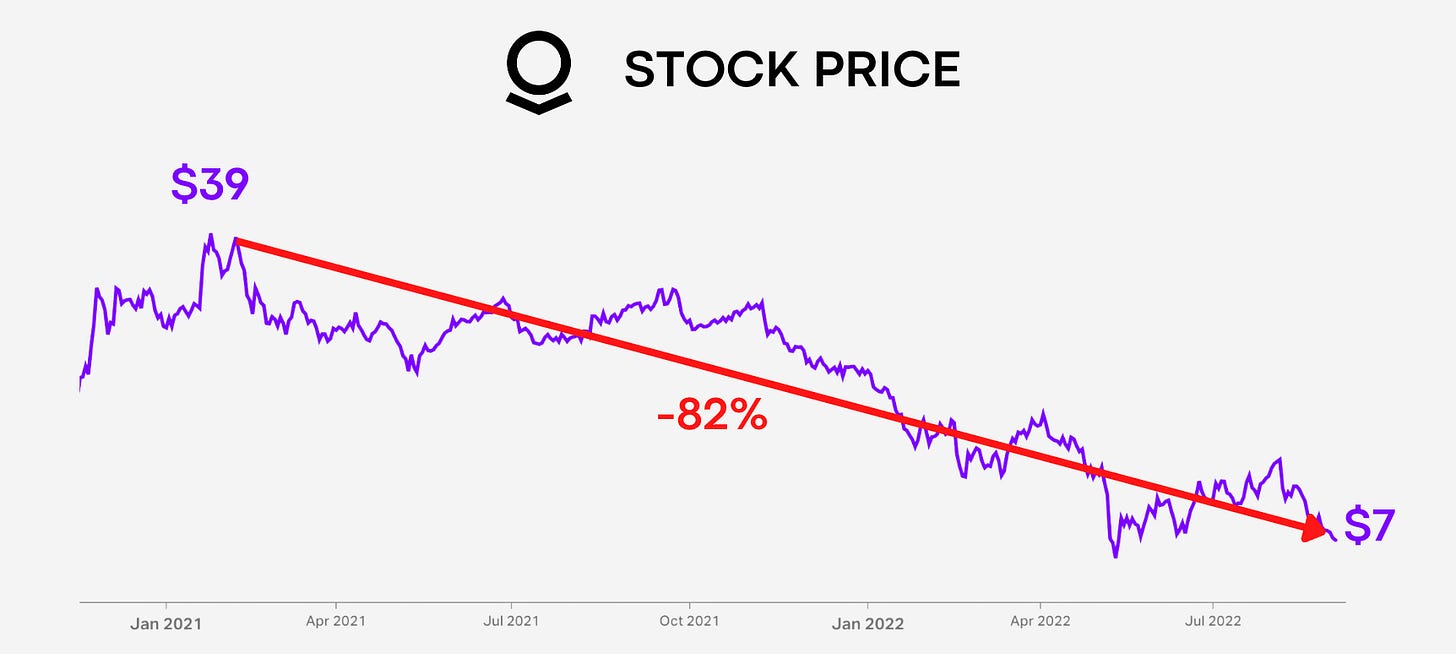PLTR Reverse DCF: what is the current price implying?
Testing assumptions is more powerful than predicting
Editor: @Emanuele20x
Palantir just returned to a ~$7 per share similar to post Q2 Earnings, a Quarterly call that raised doubts about its operations (PLTR Q2: Really A Disaster?).
Is PLTR 0.00%↑ bad, or is the price starting to imply too much negativity?
To answer this question we can use a Reverse DCF.
In a regular DCF, we select the assumptions to obtain the “fair value” of the company. Performing an Inverse DCF means doing the opposite.
Starting from the current price we obtain the assumption needed to justify it.
From here:
any improvement from this case = potential upside.
worsening numbers = potential downside
This way we don’t seek to answer “what is the company worth?”, but we start from the reality, the current price, in order to test how reasonable the implied assumptions are.
Wrong assumptions implied by the market = overhype or over pessimism.
What does PLTR price imply?
Below is a simple and synthetic PLTR DCF that I’ve created, which expresses potential assumptions implied by the current share price of $7.4 per share.
If you would like to perform your own assumptions and help support my research, you could find the link to the sample DCF below.
The current price implies a conservative scenario:
25% Revenue growth for ‘22 but later adjusting to 30% following 30% Guidance;
25% FCF Margin for many years, a reduction compared with the 31% in ‘21;
10% Dilution in ‘22 and gradually decreasing towards 3%;
15% WACC (discount rate) = minimum hurdle rate required by VC funds;
3% perpetuity growth rate.
The current price reflects doubts about Palantir’s ability to increase growth above the guidance and already incorporate the adverse effects of SBC (Why 99% PLTR DCFs Fail).
Lots of negativity is already incorporated into the price, leaving more space for the upside.
How can Palantir stock raise?
There are many ways that could support Palantir’s price:
Better growth sustained both by major wins in Government business (potential wins from NHS, TITAN) and Commercial, especially in the US (PLTR US Commercial is the Key), which is growing by +40%.
Better margins from existing clients scaling more than the margin pressure from acquiring new clients. I expect the combination of growth and FCF to stay at least ~60%.
Lower dilution. ‘22 dilution should still be high considering PLTR’s aggressive hiring (PLTR Against the Tide). Any clear sign of steady SBC reduction should be appreciated by the market.
Lower WACC (weighted average cost of capital), used by analysts. For instance, BofA currently uses 13% discount rate driven from the “high beta” of Palantir sector (PLTR Costs Less than Coca-Cola). If Palantir proves it can successfully navigate a recession (Is PLTR Recession Proof?) analysts could lower the applied discount rate.
Sector Multiples reevaluation. Currently, SaaS Companies trade almost at the multi-year bottom. Renewed interest in the sector would support higher multiples for Palantir than the current ones (7x EV/Sales).
Without the support of these factors, the price would not deserve the current valuation nor would it be subjected to further upside.
Conclusion
It is crucial that Palantir shows better results than those of Q2 (PLTR Q2: Really A Disaster?) and starts translating the clients acquired into Revenue growth.
The assumptions implied by the current price are quite conservative and leave substantial upside if Palantir delivers.
However, a further slowdown would inevitably reduce the assumptions used by banks to evaluate Palantir and create further downside pressure on the stock.
Yours,
Arny
Join me on:
Twitter: @arny_trezzi
Youtube: @Arny Investing
Instagram: @arnylaorca
Discord Channel
View expresses are my own and do not represent Financial Advice in any way.
I own (many) PLTR 0.00%↑ stocks.







